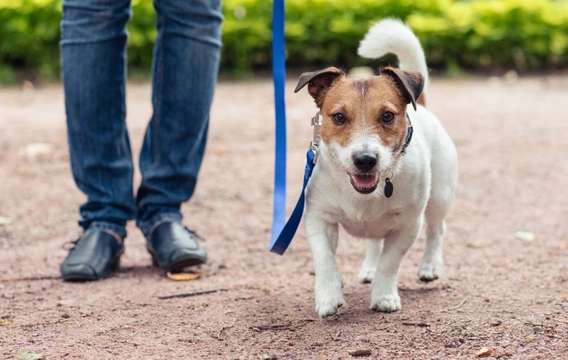
How to work out how much exercise your dog needs
All dogs need to be exercised each day in order to keep them fit, happy and to provide an appropriate outlet for their pent-up energy, and to allow them to play and socialise with other dogs too. Walks should be varied and interesting and incorporate both on-lead time and off lead play, and potentially some training or refreshing of skills too.
However, every dog has different requirements in terms of how much exercise they need each day, and this can depend on the dog’s breed, age and lifestyle, as well as their behaviour and temperament. For instance, some dogs are perfectly happy or even keen to skip a walk when the weather is bad in preference for staying on the sofa, while others can become hard to manage and overly excited if you simply curtail their normal walk ten minutes early.
Most dog owners naturally find the right balance in terms of exercise for their own dog over time, but if you’re not sure how to tell how much exercise your dog needs or if you’re providing enough, this article will help to provide some pointers on ways to work it out.
Read on to learn how to work out how much exercise your dog needs.
Their breed or type
Your dog’s breed or breed background can go a long way towards helping to indicate how much exercise your dog needs, and it is usually relatively simple to find out how lively or otherwise any pedigree dog breed is apt to be. For instance, the Border collie has one of the highest levels of exercise requirements of all, ideally needing several hours each day outside running around.
The English bulldog on the other hand is a much more sedentary breed that will usually be happy with a couple of half-hour walks a day, and a lot of breeds fall somewhere in the middle.
For cross breed dogs and those with unknown origins, if you can make a guess or draw informed conclusions about the breeds involved in the mixture, this can provide pointers too.
Their age
Puppies are of course full of beans and very playful, and keen to exercise and explore. However, they also tend to get tired more easily, and are only able to manage shorter periods of exercise.
Adult dogs under the age of around seven are likely to need more exercise than pups or mature and elderly dogs, and so you might find that your dog’s desire for exercise and how long they are happy to walk for gets gradually shorter as they get older.
Current fitness and lifestyle
Even dogs from breeds that are very lively and love to exercise won’t be as energetic as they might be if they are unfit, or used to a very sedentary lifestyle. However, just because your dog is used to not walking for as long as they might like doesn’t mean this is a good thing, and you should work to improve your dog’s fitness and make positive lifestyle changes for both your dog and yourself in order to provide them with an appropriate amount of exercise for a happy, healthy life.
Matching food intake to exercise
If your dog eats more food, they will need more exercise to burn it off, otherwise it will turn to fat. Extra treats, table scraps and being a little overly generous when you fill your dog’s food bowl can soon lead to creeping weight gain, and so you need to ensure that you reduce your dog’s food portions if they walk less, or start upping their walks to match.
How to tell if your dog is getting the right amount of exercise
If your dog is being exercised enough, this will usually manifest in several different ways. They should look lean and fit (assuming that they aren’t being fed too much), be able to keep up on walks and not get tired out too soon, and be able to run and play on an even footing with other dogs they meet.
Your dog’s behaviour can give you a lot of pointers too, and a dog that is well exercised shouldn’t be unruly, overly excitable or destructive within the home. Your dog should come back from walks tired and ready to rest and recuperate, but not so worn out that they’re struggling to pick their feet up on the way back.
How to tell if your dog needs more exercise
If your dog is overweight, they probably need more walks, or at least less food. However, your dog’s behaviour is perhaps the most obvious indication of how well their activity levels meet their needs, and a dog that is full of energy they can’t burn off effectively is apt to be a real handful.
Dogs that aren’t walked enough may become destructive within the house, or be so highly strung and full of beans that they’re hard to manage, don’t listen, or keep wandering off. If your dog won’t come back to you at the end of a walk without a big fuss, they might not be getting enough exercise too, and some dogs will escape from their home or garden to go for a stroll if they think they won’t be walked too!
A great many dogs in the UK simply don’t get enough daily exercise, and providing one particularly long walk each week won’t make up for this. It is really important to work out how much exercise any given dog might need before you buy it, as if your lifestyles and energy levels aren’t a good match, one or both of you won’t be happy.



